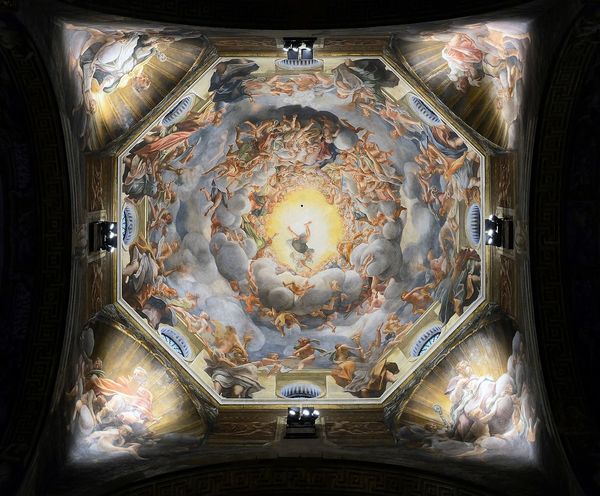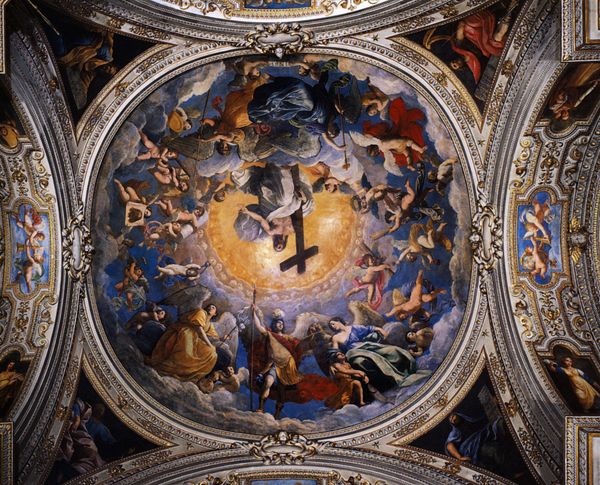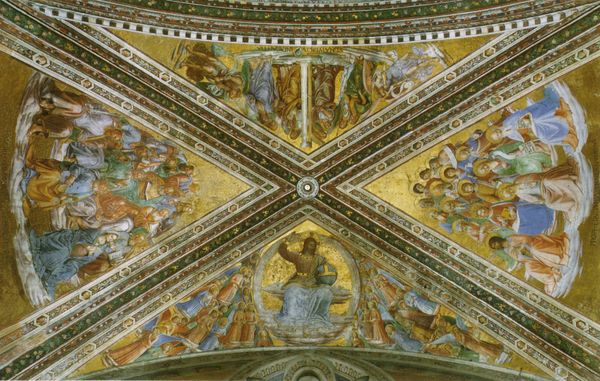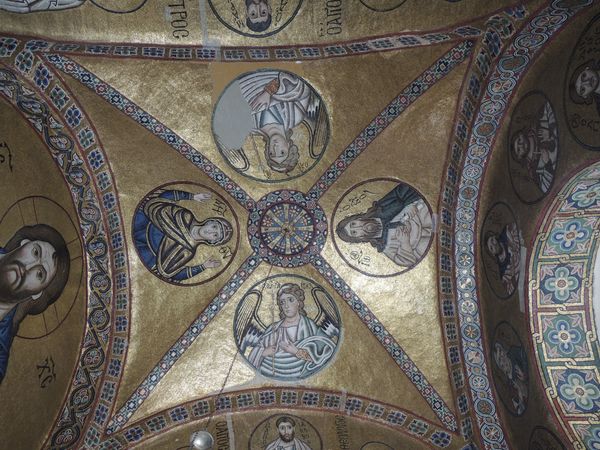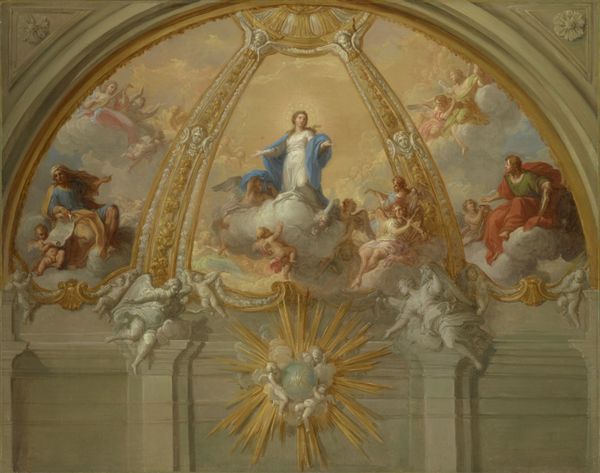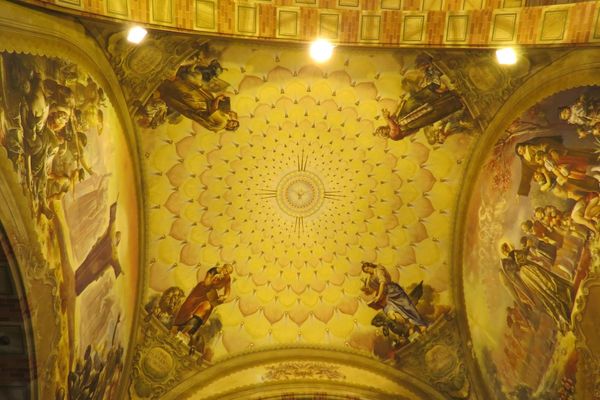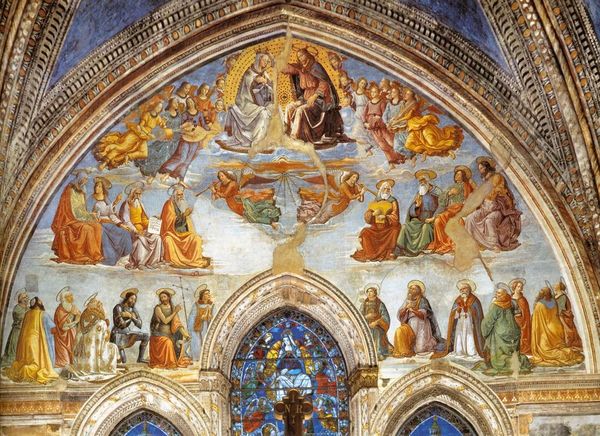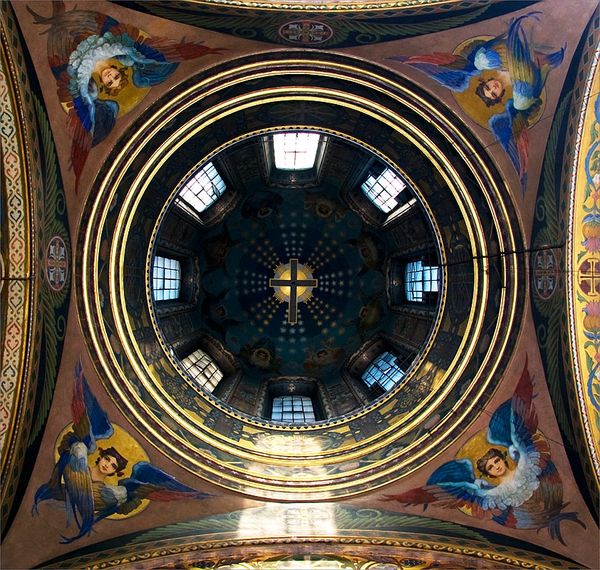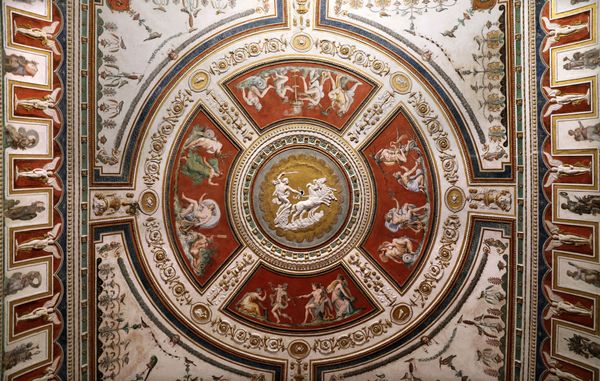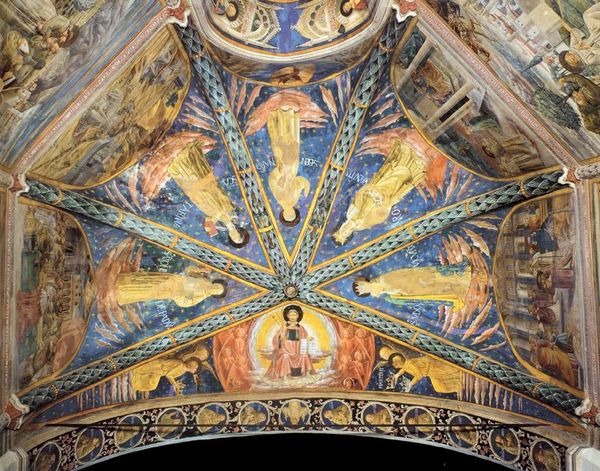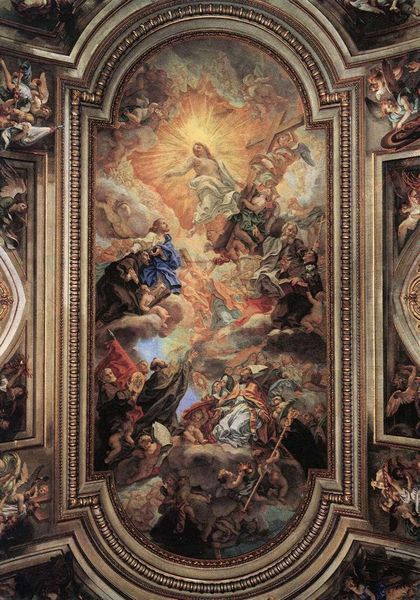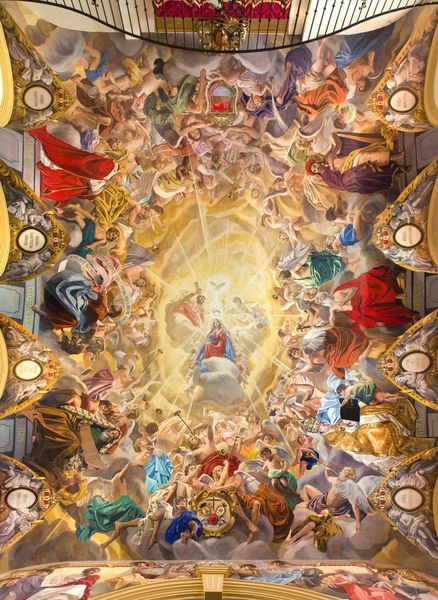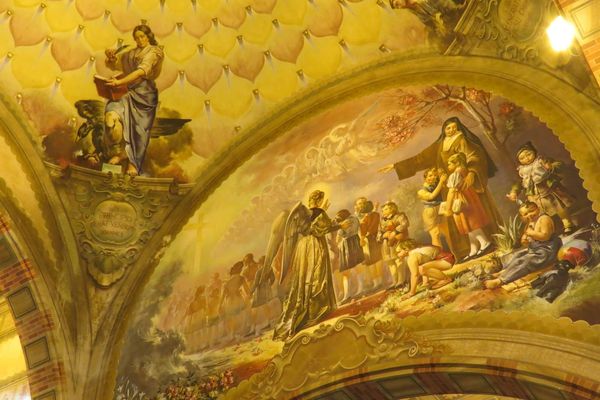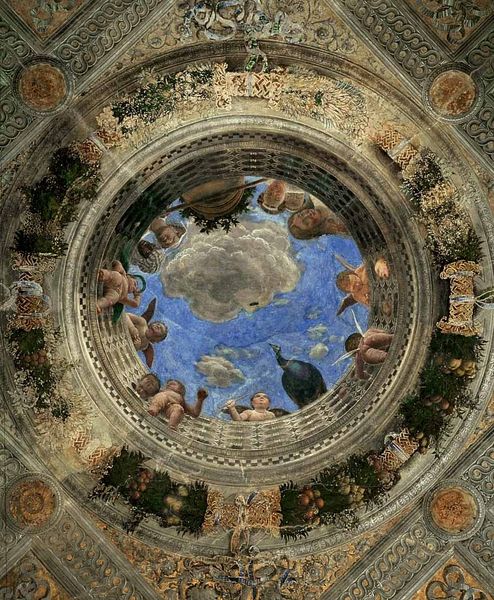
painting, oil-paint, fresco, mural
#
allegory
#
painting
#
oil-paint
#
fresco
#
history-painting
#
italian-renaissance
#
mural
Copyright: Public domain
Curator: Take a look at this beautiful dome. The piece is titled Saint John the Evangelist, made with fresco and oil-paint by Correggio. Editor: It’s stunning! All those figures spiraling upwards create such a dynamic feeling. The light radiating from the center practically pulls you in. It’s ethereal. Curator: The painting doesn't exist in a vacuum, you know? Consider the commission, and the cultural moment. This fresco was part of a larger project within the church itself. It speaks to the power structures inherent in artistic patronage during the Italian Renaissance. Editor: Right, but how might this scene resonate with contemporary audiences? We can think about its presentation of the body and consider a queer reading, for instance. Gender isn't explicitly signaled. How might these subtleties, if at all, engage in or disrupt existing narratives of representation? Curator: Perhaps the dynamic swirling does speak to upheaval in religious imagery itself? These ceilings became canvases to project narratives. Look at the strategic way light emphasizes Saint John, elevating him and his message. This wasn't simply a 'pretty' painting, it had clear political functions! Editor: Political, certainly, but the symbolism remains potent for us today. I’m interested in thinking through themes of ascent, illumination, or even transformation that move beyond religious confines. Even if within that framework, do all viewers respond the same way to his upward motion? Some of us may find the reach for some other realm inspiring; some others among us will notice their feet are firmly still on the ground. Curator: A vital distinction. We must also be wary about presenting it as something ‘neutral’ when there’s so much legacy of institutional power attached. Understanding its historical purpose in this religious space is a necessary step to fully address all the threads within its rich legacy. Editor: Of course, and your reminder helps open the artwork for the possibility to start diverse new readings, based on positionality. Art like this can trigger crucial reflections of the social. Curator: It becomes a portal into considering the multifaceted dialogues—old and new—embedded in our collective narratives. Editor: Indeed, art provides platforms for dialogue, allowing each of us, viewer by viewer, to question, reflect, and re-imagine ourselves in history.
Comments
No comments
Be the first to comment and join the conversation on the ultimate creative platform.
